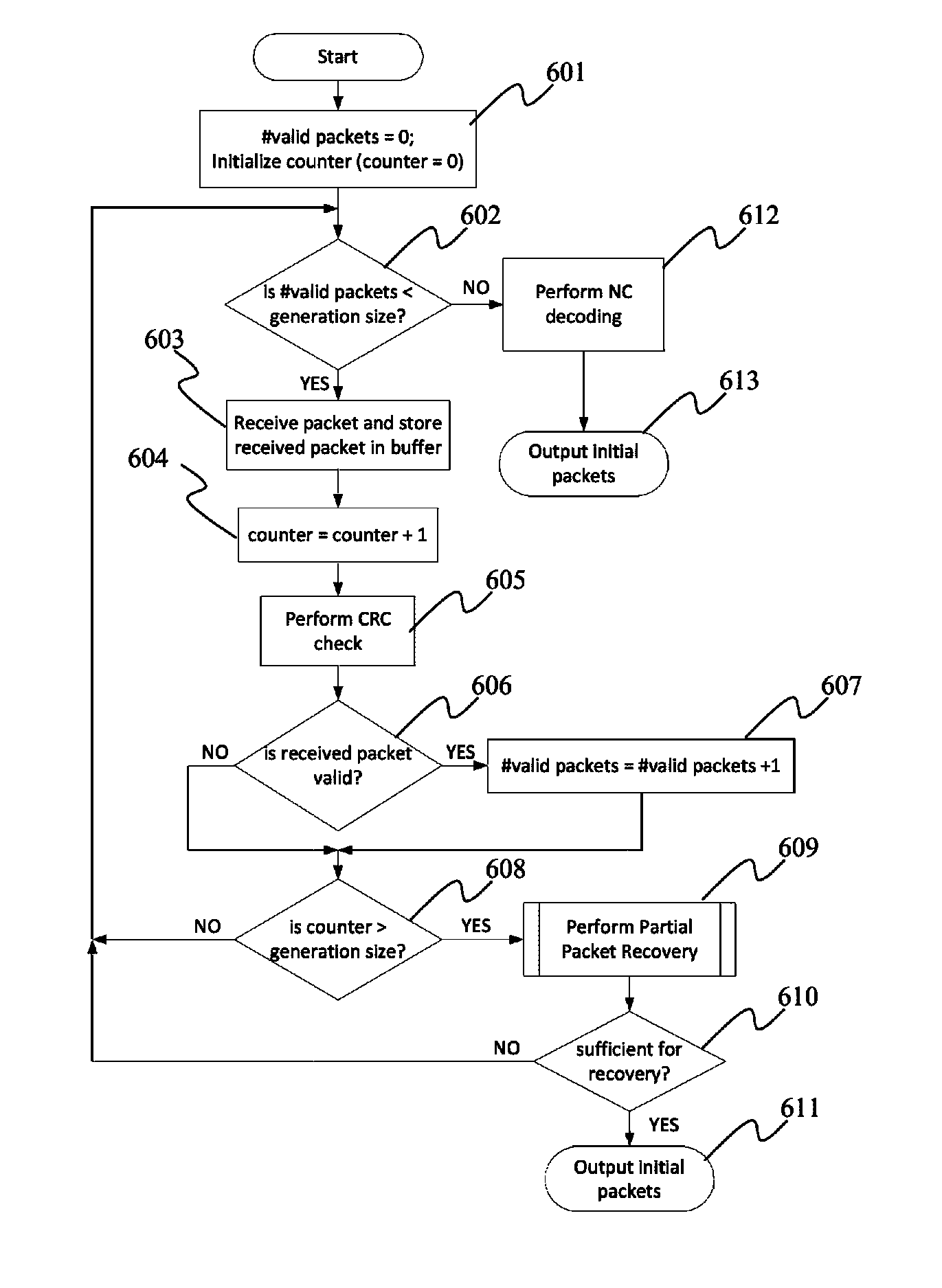Partial packet recovery in wireless networks
a wireless network and packet recovery technology, applied in the field of partial packet recovery in wireless networks, can solve the problems of inefficient resource utilization of requesting a retransmission of the entire packet, data transmitted over a wireless network can become degraded, and erroneous received bits, so as to reduce data retransmission requests and less execution time
- Summary
- Abstract
- Description
- Claims
- Application Information
AI Technical Summary
Benefits of technology
Problems solved by technology
Method used
Image
Examples
example
Simulation and Results
[0077]Simulation of the PPRNC was implemented in software to evaluate the performance offline without use of PHY's soft information.
[0078]The reduction of retransmitted packets compared to a traditional scheme, which discards partial packets, clearly illustrates the amount of information contained in these packets. PPRNC is also compared with other partial packet recovery mechanisms in terms of their ability to exploit this particular kind of information. In particular, the PPRNC is compared to the following two schemes:
[0079]ARQ: This scheme requests a new retransmitted packet every time a partial packet reaches receiver's data link layer. Its simplicity is the main reason for its popularity. However, this simplicity contributes to ARQ's poor performance, since partial packets are discarded.
[0080]Ideal H-ARQ: A hypothetical recovery mechanism which has the ability to recover any received packet with at most two transmissions. So, if a packet is received partia...
PUM
 Login to View More
Login to View More Abstract
Description
Claims
Application Information
 Login to View More
Login to View More - Generate Ideas
- Intellectual Property
- Life Sciences
- Materials
- Tech Scout
- Unparalleled Data Quality
- Higher Quality Content
- 60% Fewer Hallucinations
Browse by: Latest US Patents, China's latest patents, Technical Efficacy Thesaurus, Application Domain, Technology Topic, Popular Technical Reports.
© 2025 PatSnap. All rights reserved.Legal|Privacy policy|Modern Slavery Act Transparency Statement|Sitemap|About US| Contact US: help@patsnap.com



